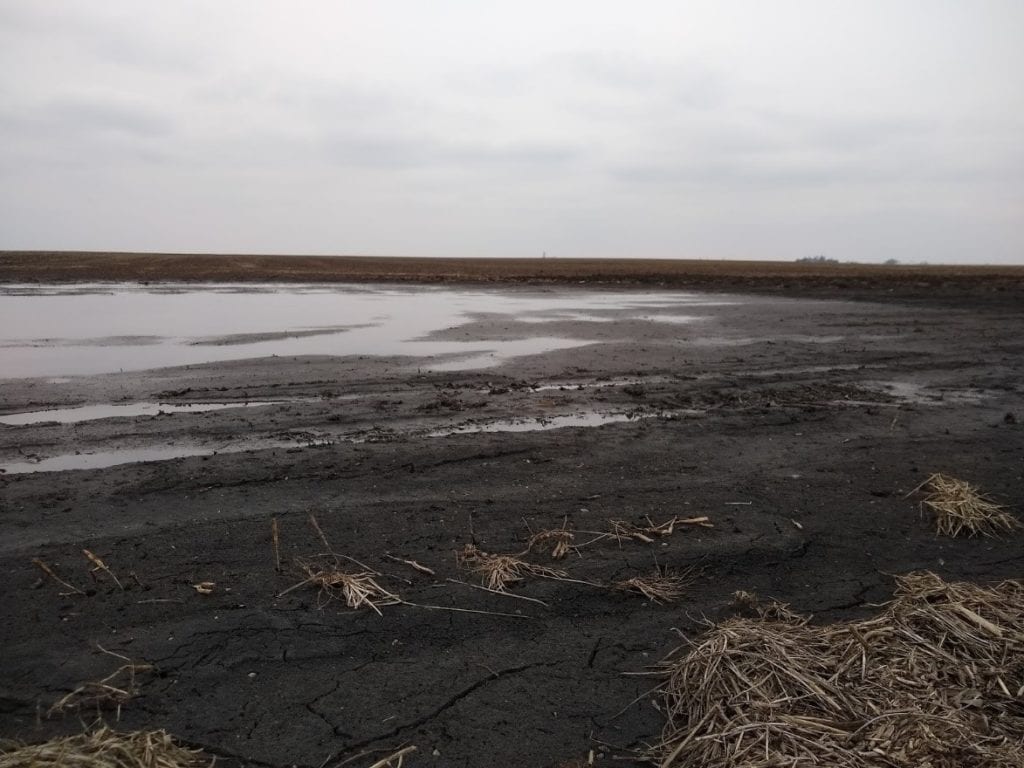We at ActionAid are joining Stop the Money Pipeline’s demand that Wall Street divest hundreds of billions of dollars from fossil fuel corporations that largely contribute to the heating of the planet, threatening our future. In doing so, we are also targeting the second largest source of greenhouse gas emissions: an unsustainable industrial food system, funded by Wall Street and big corporations, that is destroying ecosystems and increasing inequality rather than helping us realize the human right to food.
On September 22, we will be taking action in NYC at the TIAA headquarters after marching from earlier actions at the headquarters of BlackRock, the world’s largest asset manager, which is heavily invested in fossil fuels and climate-destructive industries.
Why are we targeting TIAA?
The Teachers Insurance and Annuity Association of America (TIAA) is an asset manager controlling $1.4 trillion dollars and a heavy investor in fossil fuels and farmland. TIAA has used its image as a socially responsible investor to build a client base among people who want to do good, meaning millions of employees at colleges, universities, and hospitals across the United States, workers at non-profits like ActionAid USA, and public employees in many states, Canada, and Europe trust the company to invest their savings in a responsible way. But our research has found that TIAA is actually a leader in deceptive climate greenwashing and land grabbing.
TIAA stands out among asset managers because it calls itself “the largest manager of farmland assets worldwide.” Its subsidiary, Nuveen Natural Capital, has accumulated 3 million acres of land for large-scale industrial agriculture and timber plantations since 2010.
Within the company, executives are growing their assets by grabbing land for carbon-emitting “biofuels”, animal feeds, and the sugars and fats that are the key ingredients of highly processed foods in our industrial food system. This expanding industry competes with the world’s need to protect land and forests managed by Indigenous Peoples and rural communities that rely on land and forest for decent livelihoods and nourishing food. TIAA believes that it can use this land to claim carbon offsets while it continues to invest in fossil fuels. As many of us who have been fighting alongside impacted communities suspected, these offsets are turning out to be a carbon scam because of a lack of new or lasting carbon sequestration. Instead of actually being “green”, these land grabs are actually a new form of colonialism that could never be environmentally and socially responsible.
Shining a light through TIAA’s greenwash veneer
This piece is the first of a short series aimed at exposing TIAA’s investment in climate and community destruction. In future blogs, I will discuss the deceptiveness of their sustainability reports, their claims to be helping achieve the UN Sustainable Development Goals, the weakness of their certification schemes, their key performance indicators, and claims about due diligence in land acquisition.
In this post, I’d like to focus on TIAA’s own propaganda videos to highlight the kind of agribusiness they are funding in Brazil, Australia, Poland, Romania, and the United States. In all these countries, they are obtaining land for the use of large-scale chemical-intensive agribusiness and tree plantations that extract resources from rural areas and leave communities isolated and without access to livelihoods.
Large-scale agriculture depletes communities
This agriculture is very different from the kind of farming community that I grew up in, where farming was the basis for a local economy that helped towns thrive. Farmers grew multiple crops and raised various kinds of animals on farms ranging from a few dozen to a couple hundred acres of land. They carried out business with local seed companies, ag and hardware stores, local stores, equipment dealers, machine shops, welders, mechanics, veterinarians, mills, butchers, and other markets. They traded work with neighbors and hired local youth for short-term jobs. There are places in the U.S. where this kind of farming still survives, and something similar could be revitalized if the U.S. government makes policy changes.
We are witnessing a growing number of young people who are engaging in farming and finding it to be a meaningful livelihood, but according to surveys, many have expressed that their main problem is acquiring land. We know this will continue to get much worse if we allow the likes of TIAA to continue to take over the land and invest in these giant farms, which bypass local economies and provide jobs for very few people.
Seeing through the propaganda
As part of its latest greenwashing effort, TIAA/Nuveen has chosen three large agribusiness operations to highlight in a video series it calls Faces from the Field. While TIAA tries to put its best foot forward in the videos, for example, by choosing a woman employee or manager to highlight, if we listen and watch carefully, we can see that the claims of sustainability are actually empty and non-specific promises for the future.
Notably, TIAA did not choose to highlight its Brazilian land where it works in partnership with SLC Agricola, Brazilian largest deforester for soybeans, or one of its plantations in Mississippi, where it has been most aggressive about buying land in a region where Black farmers are being displaced. Instead, TIAA features Monterrey-Pacific, a company that manages 12,000 acres of grapes for mass-produced wine in drought-ridden regions of California, and two large midwestern agribusinesses growing primarily soybeans and corn, Bryant Ag Enterprises, which covers 20,000 acres in six Ohio counties and Blout Farms covering 11,000 acres in four counties in western Illinois; both made even larger by TIAA land acquisition and leasing.
The videos feature seemingly never-ending fields covering landscapes that would naturally have varied soil types and biodiversity covered by a single crop demanding chemical fertilizers and vulnerable to pest and weed explosions requiring regular chemical intervention. The shots show the fleets of fossil fuel-consuming machinery, trucks, and tankers that allow these farms to operate with relatively few employees and the infrastructure to do business with big firms bypassing local small businesses.
The real effects of TIAA’s expansion of large-scale farming
A couple of years ago, I visited McDonough County, where TIAA leases land to Blout Farms. This former prairie land is not entirely flat, the broad expanses are broken up by creeks beds often lined by some trees. In winter, TIAA’s fields were without cover crops, completely barren soil vulnerable to erosion, so much so that one could easily see why so many agricultural chemicals end up in rivers. Nuveen specifically has owned land in the region for 25 years, and this type of agriculture has transformed the region – but not in a good way; it has pushed people out and is killing rural communities. I visited the nearby town of Blandinsville, which has lost nearly a quarter of its population since 2000. Its grand old buildings are in decay, and empty shops that once served family farmers are closed up, still displaying their rusty signs. The poverty rate in McDonough County stands at 17%, nearby Western Illinois University has had declining enrollment for 7 years, losing over a third of its students.

Photo: Doug Hertzler/ActionAid
Now, TIAA doesn’t bear sole responsibility for this. The main cause has been U.S. agricultural policy, but TIAA is seeking to profit from the loss of these regions by taking us further in the wrong direction instead of towards agroecology, which needs expanded support from policy and investment. Good for both people and the planet, agroecology can produce more food per acre by combining crops and animals in rotations suitable to microenvironments and which provide more livelihoods and burn less fossil fuel, and work to eliminate toxic chemicals. Additionally, increased public and private investment in local and regional food hubs and cooperative marketing systems will allow for a more diverse agricultural system with many kinds of crops that will lead to thriving farming regions and rebuild small towns and businesses.
In order to work towards these goals, we need to stop TIAA’s greenwashing and investment in the growth of extremely large industrial farms. That’s why we are joining forces with Stop the Money Pipeline to hold TIAA and other investors in climate destruction accountable. We are building a movement and turning the tide in climate justice and the right to food. Stay tuned for the following blogs and other actions to join!



